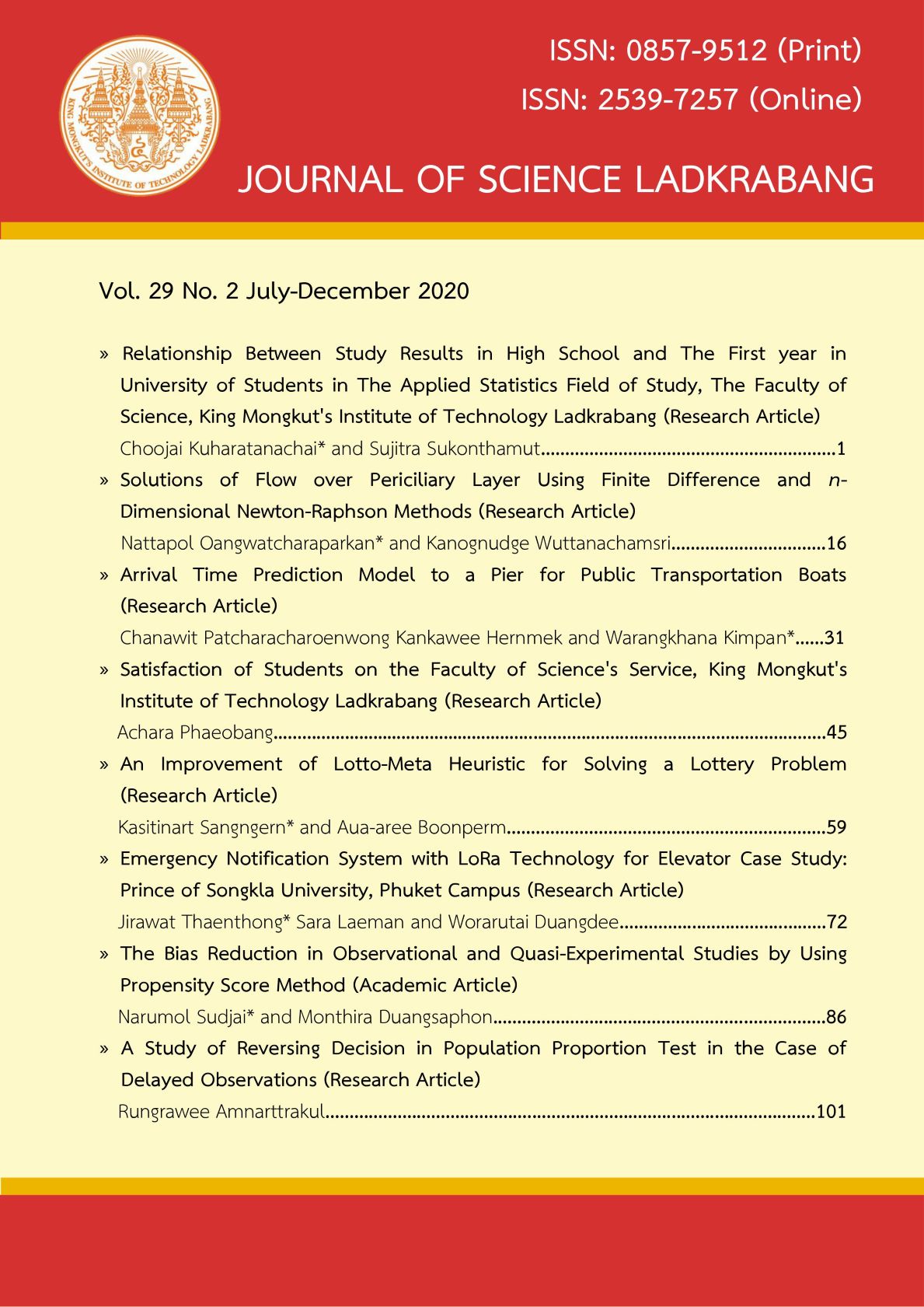Arrival Time Prediction Model to a Pier for Public Transportation Boats
Main Article Content
Abstract
This paper proposed a time prediction model of public transportation boats arrival to a pier using navigational data from the Internet of Things (IoT) devices attached to public boats from 27 November 2018 to 31 May 2019 in order to analyze the relationship of public transportation boats data used in creating a prediction model. Six algorithms which are Linear Regression, Random Forest, Gradient Boost, eXtreme Gradient Boost, Light Gradient Boost, and CatBoost, were created into models. After that, the performance of the models were tested by Root Mean Square Error in order to find the optimal model and evaluated by testing the predicted arrival time models then compared to the arrival time from IoT devices at transportation boats. The results show that the model created by CatBoost algorithm performed the optimal of Root Mean Square Error values at 88.25 seconds of the travelling time from the origin to the destination pier and at 90.06 seconds of the return trip compared to other algorithms.
Article Details
References
Vijite, P. 2018. Machine Learning. Available at: https://medium.com/coeffest/table-of-contents-machine-learning-theory-103315c4afa9. Retrieved January 17, 2019.
Gallo, A. 2015. A Refresher on Regression Analysis. Available at: https://hbr.org/2015 /11/a-refresher-on-regression-analysis. Retrieved February 5, 2019.
Singh, A. 2018. A Comprehensive Guide to Ensemble Learning (with Python codes). Available at: https://www.analyticsvidhya.com/blog/2018/06/comprehensive-guide-for-ensemble-models/. Retrieved February 13, 2019.
Tseng, G. 2018. Gradient Boosting and XGBoost. Available at: https://medium.com /@gabrieltseng/. Retrieved February 20, 2019.
Ray, S. 2017. CatBoost: A machine learning library to handle categorical (CAT) data automatically. Available at: https://www.analyticsvidhya.com/blog/2017/08/ catboost -automated-categorical-data/. Retrieved March 19, 2019.
Smriti, S. 2019. What is Mean Squared Error, Mean Absolute Error, Root Mean Squared Error and R Squared?. Available at: https://www.studytonight.com/post/ what-is-mean-squared-error-mean-absolute-error-root-mean-squared-error-and-r-squared. Retrieved April 4, 2019.
Gal, A., Mandelbaum, A., Schnitzler, F., Senderovich, A. and Weidlich, M. 2017. Traveling time prediction in scheduled transportation with journey segments. Inf. Syst., (64), 266–280.
Zhang, Y. and Haghani, A. 2015. A gradient boosting method to improve travel time prediction. Transportation Research Part C : Emerging Technologies, (58), 308-324.
Dorogush, A.V., Ershov, V. and Gulin, A. 2018. CatBoost: Gradient boosting with categorical features support. In ML Systems Workshop at NIPS.
Cheng, J., Li, G. and Chen, X. 2019. Research on Travel Time Prediction Model of Freeway Based on Gradient Boosting Decision Tree. IEEE Access, (7), 7466-7480.

